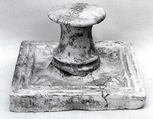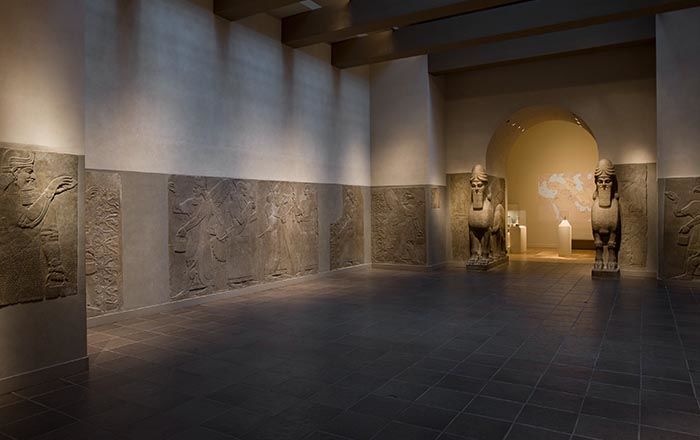Wall plaque
Not on view
This glazed ceramic plaque is square, with a triple border of raised lines and scalloped in the corners. The center is dominated by a peg with an Elamite cuneiform inscription in the center reading ‘Untash-Napirisha,’ the name of an Elamite king who reigned ca. 1340-1300 B.C.
It was excavated at Choga Zanbil, about 50 miles north of modern Ahvaz, Iran. Established by Untash-Napirisha as a new capital of the Elamite kingdom, the site boasts one of the best-preserved ziggurats in the ancient world. At least twenty-five different gods were worshipped there, and although the city was not completed by the time of Untash-Napirisha’s death, it continued to serve as a religious center until ca. 1000 B.C. Hundreds of similar plaques were discovered by archaeologists at the site, suggesting that they played a prominent role there.
The exact function of these plaques remains uncertain. It is likely that they are an iteration of an earlier tradition in Mesopotamia and Iran, dating to the third millennium B.C., of dedicating votive plaques, which were literally affixed to temple walls with wooden pegs. In these later versions, however, the peg has become an integral part of the plaque itself. It is possible that the pegs were used to suspend some kind of attachment, such as a tapestry or other wall hanging.
This image cannot be enlarged, viewed at full screen, or downloaded.

